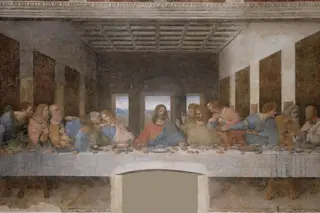Leonardo da Vinci's "The Last Supper" is not only one of the world's most important works of art but also a classic example of the laws of physics at work.
When da Vinci completed the 15-by-28-foot masterpiece in 1498, his experimental oil-tempera mix did not adhere well to the damp wall of the monastery of Santa Maria delle Grazie in Milan, and the mural quickly began to disintegrate. Some 50 years later, da Vinci's biographer Giorgio Vasari remarked that there was "nothing visible except a muddle of blots." Extensive touch-up efforts during the last half millennium reversed much of the peeling and crumbling, but the original wonder and luster of the painting can never be fully restored.
The authors of On the Beauty of Physics feature "The Last Supper" as a case study of entropy—a measure of the tendency toward disorder in a thermodynamic system. Organized in encyclopedic form, the ...














